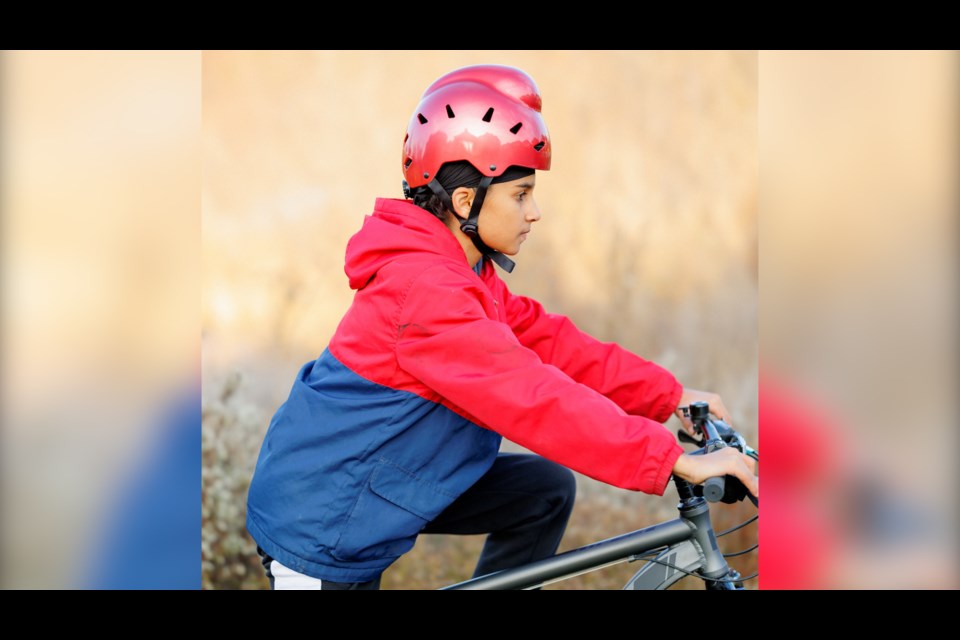Sea to Sky Sikh kids can soon ride and roll with a helmet that accommodates their hair covering, or patka.
Tina Singh, an Ontario occupational therapist and mom of three, has created a helmet for kids five and up for cycling, skateboarding, kick-scootering or inline skating with a bulge at the top to fit a traditional Sikh topknot bun.
For religious reasons, practicing Sikhs do not cut their hair.
The idea for the Bold Helmet was born out of watching her active sons struggle to make a typical helmet fit.
As an occupational therapist who worked with patients with acquired brain injury, Singh knew she couldn't let her sons roll without a helmet.
A report by the Canadian Pediatric Society states that helmets are estimated to reduce the risk of head and brain injuries by 69%, severe brain injuries by 74% and facial injuries by 65%.
"We know that a helmet can't always protect you in every situation, but in order for a helmet to do its best job, it has to fit right," Singh said.
She said Sikh kids who can't fit into a helmet due to their hair might not wear a helmet, or, as she did, their parents may hollow out a traditional helmet to fit, which is not ideal.
Years of designing and safety testing later, the children's helmet — which comes in red, blue and matte black at her sons' request — is in pre-sale.
The move has garnered her media attention across Canada and around the globe, something that surprised Singh.
"It went so international, like not just Canada and the U.S., but also India, and the U.K. — so many places," she said.
So far, the helmet is only available online and in Canada, though she aims to expand to U.S. and international markets.
It retails for about $70, not including shipping costs.
While it was created with Sikh boys in mind, others have told her it could fit well for kids’ long-hair-related issues, like girls pulling up their hair in a bun to keep it off their necks.
She has received a flurry of requests for other types of helmets for other sports where the lack of an appropriate helmet is a barrier, such as climbing.
For example, her helmet isn't appropriate for mountain biking, as it requires different safety testing.
Her next goal is to expand the sizes of her helmet, so it can fit older kids and eventually get into hockey helmet design.
"I would love to move into hockey because that is a huge identified need in our community. We have so many kids in hockey here. And you know, I've seen some people leave hockey because of ... not having a helmet that fits. I really don't want any kid to have to choose. And I feel like hockey is a big area where I see the need, and hopefully, I can create something," she said.
"There's so much work to be done."
Singh added that she has also heard about other needs unrelated to Sikh coverings, such as helmets for youth with cochlear hearing implants, for whom traditional helmets don't fit.
"I think that there's a big gap here. It's not just Sikh kids who have been missed; there's a lot of other people who are not being served."
Find out more about the helmet at www.boldhelmets.com.






